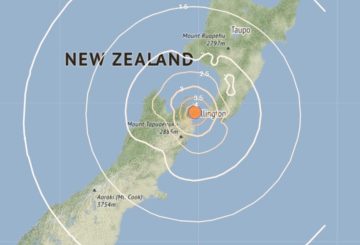Dewan Regional Toi Moana Bay of Plenty telah menyambut investasi bersama $20 juta dari Anggaran 2024 untuk meningkatkan ketahanan banjir di komunitas Bay of Plenty. Anggaran Pemerintah koalisi mencakup rencana Dana Infrastruktur Daerah untuk mendukung produktivitas dan ketahanan daerah. Dana ini, dengan total $1,2 miliar selama tiga tahun, akan berinvestasi dalam infrastruktur baru dan yang sudah ada di seluruh wilayah Selandia Baru.
Proyek pertama yang akan didanai adalah proyek perlindungan dan ketahanan banjir, dengan alokasi awal $200 juta. Dari jumlah tersebut, hingga $101,1 juta didedikasikan untuk 42 proyek nasional. Investasi bersama akan dikelola oleh Kānoa – Unit Pengembangan Ekonomi dan Investasi Regional, dan akan mendukung Dewan Regional dalam memberikan proyek infrastruktur perlindungan banjir di tiga dari lima sungai dan skema drainase.
Proyek-proyek tersebut mencakup tahapan masa depan Project Future Proof, sebuah proyek multi-tahap untuk membangun kembali pertahanan banjir di pusat kota Whakatāne, memperbaiki dan mengganti infrastruktur banjir di Sungai Kaituna yang lebih rendah, dan meningkatkan stopbank di sekitar Ōpōtiki.
Ketua Dewan Doug Leeder mengatakan investasi bersama mengakui pentingnya infrastruktur dalam melindungi kehidupan dan mata pencaharian di seluruh wilayah. Dia menyoroti bahwa banjir adalah bahaya alam paling umum di Selandia Baru, dengan peristiwa banjir besar terjadi rata-rata setiap delapan bulan. Dia menekankan perlunya bertindak sekarang, karena sebagian besar infrastruktur banjir Selandia Baru tidak dibangun untuk skala atau intensitas peristiwa cuaca yang kita lihat hari ini atau akan kita lihat di masa depan.
Investasi bersama dibangun di atas program Komunitas Sungai Tangguh bersama yang ada antara dewan regional dan kesatuan dan Kānoa, yang telah membantu mengurangi peningkatan biaya bagi pembayar tarif sejak dimulai pada tahun 2020. Leeder mengatakan putaran investasi bersama terbaru ini diharapkan melakukan hal yang sama.
Dewan Daerah saat ini sedang mengerjakan implikasi pengumuman Anggaran 2024 tentang tarifnya, dengan informasi yang akan dipublikasikan setelah Rencana Jangka Panjang diadopsi pada 26 Juni.

















































-660x440.jpg)












